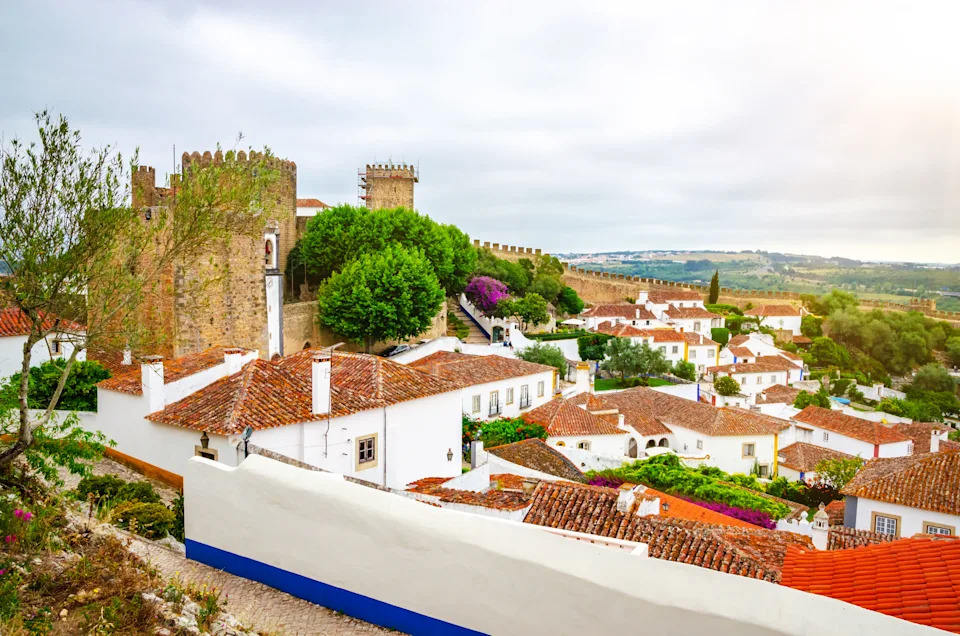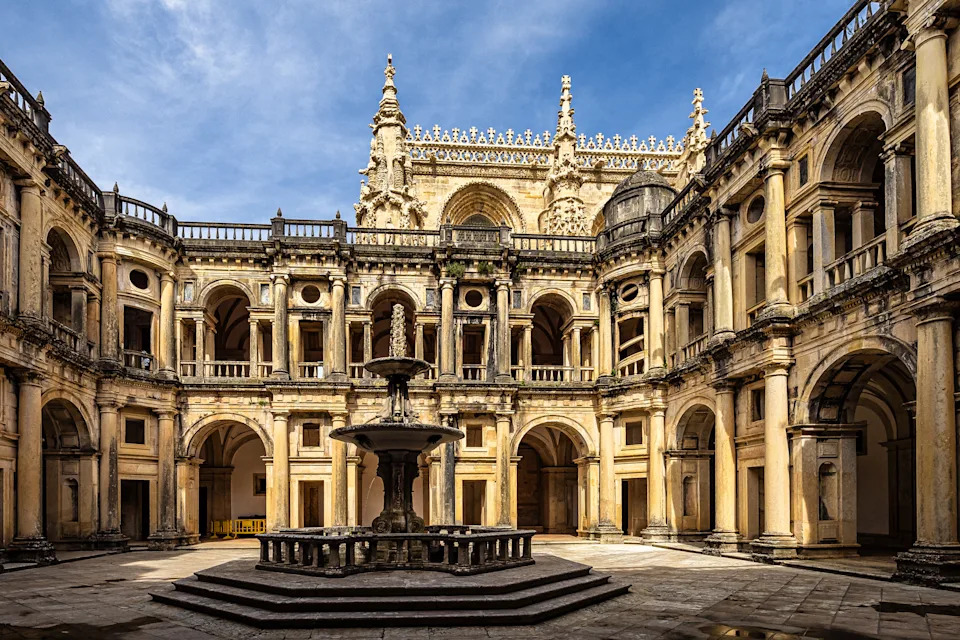Portugal has two well-worn scripts: the coastal cool of Lisbon and the wine-soaked charm of Porto. But perhaps the country’s most enchanting chapter is inland, where medieval walled towns, Templar fortresses, and Gothic monasteries rise from quiet hillsides. This stretch of central Portugal is not new, but it feels newly rediscovered, especially for travelers who want history with breathing room.
During a visit, I explored four UNESCO World Heritage sites that anchor this region. What stood out most was how concentrated the storytelling is here. It was basically a tour of castles, and within an hour or two, you can walk a medieval rampart built for queens, step inside a Templar rotunda, and stand beneath some of Europe’s most intricate Gothic stonework. Central Portugal is compact, deeply layered with history, and remarkably uncrowded compared to typical tourist hubs.
Why Central Portugal should be on your radar
Portugal welcomed 31.6 million visitors in 2024, with the vast majority concentrating in the country’s coastal hubs — Lisbon, Porto, Cascais, the Algarve, and the surf towns north of Nazaré. These areas absorb most of the country’s tourism because they’re easy to reach, heavily promoted, and packed with iconic experiences: pastel-de-nata trails in Lisbon, wine cellars in Vila Nova de Gaia, cliff-lined beaches in Lagos, and world-famous waves along the Silver Coast. But that coastal pull has created a familiar pattern: crowded viewpoints, waitlists for restaurants, and historic districts that feel stretched thin in peak season.
That pressure is quietly pushing curious travelers who still want to explore the country inland, toward the center of the country, where historic towns like Óbidos, Tomar, Alcobaça, and Batalha offer something the coastal cities can’t: calm. No crush of tour groups. No rush between attractions. Just small plazas, quiet cafés, and stories carved into stone.
Another reason this region is rising is the cluster of UNESCO sites. Three of Portugal’s most significant monuments — Batalha Monastery, Alcobaça Monastery, and the Convent of Christ in Tomar — can now be visited with a single seven-day World Heritage Ticket. For travelers who want depth instead of speed, and history without the crowd surge, central Portugal delivers.
Óbidos: A Queen’s Village with a Castle Wall You Can Still Walk

If Portugal had a medieval postcard, Óbidos would be it. The entire village sits inside fortress walls that was once a gift to a queen. A tradition that tied the town to Portugal’s royal household for centuries. Today, walking those same walls is still the best way to understand it. The nearly 1.5-kilometer loop pulls you above the rooftops, where whitewashed houses rimmed in cobalt feel frozen in time and the countryside spills out in every direction.
Óbidos isn’t just scenic, it’s alive with literary festivals, local artisans, and the town’s signature ginja served in chocolate cups. It’s one of the rare places where medieval structure, everyday life, and a little whimsy coexist without feeling staged.
Batalha: Gothic Power and the Chapel That Was Never Finished

The Monastery of Batalha is what many call Portugal’s architectural declaration of victory. It was built after the 1385 Battle of Aljubarrota, a turning point in the country’s independence. Its Gothic lines pull you in, but it’s the Capelas Imperfeitas, the “Unfinished Chapels,” that stop you. Open to the sky and carved with an almost obsessive level of Manueline detail, they feel like a monument caught mid-breath.
Batalha is memorable because you can see the ambition and the interruption. A royal pantheon meant to showcase power, paused by shifting politics and never completed. Few monuments manage to show both triumph and vulnerability so clearly.
Tomar: Templar Secrets in Plain Sight

Tomar’s Convent of Christ is the strongest surviving chapter of Portugal’s Templar history, where the order’s symbols, architecture, and influence are still visible in every corner. Once inside the Charola rotunda, the circular sanctuary modeled after the Holy Sepulchre, you’re surrounded by artwork, symbols, and stonework that trace centuries of religious and political influence. Each cloister reflects a different era, turning the site into a timeline you can physically walk.
Tomar itself is a small, easygoing riverside town where the past feels unusually accessible. It’s one of the best bases in central Portugal to slow down, stay a night, and let the history settle in rather than sprinting between sites.
Alcobaça: Where Royal Love and Monastic Mastery Collide

Alcobaça’s monastery is deceptive. It appears modest from the outside, but is jaw dropping within. Its nave is one of the purest examples of Cistercian architecture in Europe, stripped back and serene. But the emotional center sits in the transept: the facing tombs of King Pedro I and Inês de Castro, whose 14th-century love story shaped Portuguese folklore. Their placement means they “meet” in the afterlife — a detail that hits you even if you don’t know the history going in.
Alcobaça also shaped Portugal’s culinary identity. Monks and nuns perfected the country’s famous egg-based desserts, from pudim de ovos to the syrup-soaked trouxas de ovos, using leftover yolks from starching habits. It’s one of the few places where you can trace architecture, romance, and gastronomy back to the same monastic origin.
What surprised me most
Central Portugal isn’t trying to compete with Lisbon or Porto. It doesn’t have to. What you get here is pure history and culture. These towns are lived in with a distinct identity, not curated. And as a traveler you’ll be rewarded by walking, wandering, and lingering. If you want history without chaos, this region is one of Europe’s most accessible deep dives.
How to plan a smart trip through Central Portugal
Start in Lisbon, drive inland, and slow down your pace.
Central Portugal isn’t meant to be rushed. The towns are close together, but each site deserves its own window of time.
Rent a car for full flexibility.
Highways are easy, signage is clear, and you’ll want the freedom to detour through smaller villages. Parking near major monuments is straightforward if you arrive earlier in the day.
Build your route around the UNESCO triangle.
The most efficient loop is:
Lisbon → Óbidos → Alcobaça → Batalha → Tomar → back to Lisbon
Each drive is roughly 30–45 minutes, which keeps the days light and enjoyable.
Stay at least one night in Tomar or Óbidos.
Both towns transform after day-trippers leave. Evening walks, quiet plazas, and monastery views are part of the experience.
Use the World Heritage Ticket.
For €15, the seven-day pass covers Batalha, Alcobaça, and the Convent of Christ — a better value than buying each separately and ideal if you’re doing the loop.
Time your visits.
Mornings offer softer light and fewer crowds. Afternoons tend to fill up with buses. Plan indoor-heavy stops like Alcobaça or Batalha for midday heat.
Plan your meals locally.
Skip highway rest stops. Every town has small taverns, bakeries, and cafés where you can try regional dishes and monastic desserts passed down for generations.
Bring stable shoes.
Cobblestones, monastery staircases, and castle walls are uneven. Good footwear lets you enjoy the views instead of watching your feet.
Give yourself space between sites.
This region rewards wandering — stepping into a cloister courtyard, drifting through a café, or sitting quietly inside a church. You don’t need a packed itinerary.
For more travel resources to help you to do the most with your vacation experiences, visit TravelwithDayvee.com
